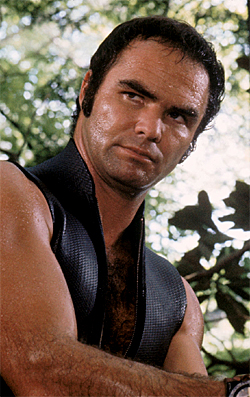What if Bryan Ferry continued with his 1978-era beard? How might rock history have been changed?
Need more evidence of the potential effects of Bearded Ferry? Continue reading »
What if Bryan Ferry continued with his 1978-era beard? How might rock history have been changed?
Need more evidence of the potential effects of Bearded Ferry? Continue reading »
In the above clip, one of Prog-Rock’s Sexiest Men, Chris Squire, and Yes bandmates Steve Howe and Alan White, humorously discuss the halcyon days of rock cape-wear. It’s fitting that they should have the first word on the matter because, along with their bandmate Rick Wakeman, they took The Cape about as far as it has gone in rock ‘n roll history to date. The Cape is our latest subject in an ongoing series assessing of Rock’s Unfulfilled Fashion Ideas. Maybe you can help us better understand the cape’s appeal and possible resurgence in rock ‘n roll style.
This clip, which Townsman dbuskirk shared with some of his close, personal friends this morning, brought back memories of some of Hall & Oates’ lesser, pre-pastel ’80s hits, but what stood out most for me was Daryl Hall‘s blue jumpsuit.
As the results of a solid 2 minutes of research indicate, Elvis Presley first donned the jumpsuit in 1969. Was this the first time the jumpsuit entered the world of rock ‘n roll? A piece on a 2007 Graceland exhibit on Elvis’ jumpsuits notes that the Elvis jumpsuit was originally a 2-piece ensemble, inspired by The King’s karate wear. As he prepared for his Las Vegas stint following the legendary ’68 Comeback Special, Elvis saw the jumpsuit as a more-interesting alternative to the standard tuxedo favored by “square” performers.
He was going there to rock. Wanting something different and special, he called upon Bill Belew, who had designed the now-classic black leather suit and other outfits for the ’68 special. Inspired by Elvis’ great interest in karate, Belew came up with simple two-piece gabardine suits with tunic-style tops and simple, long karate-style belts knotted to one side with the ends dangling from the hip.
It turns out that Elvis didn’t wear the actual 1-piece jumpsuit – which we all would agree is the mark of a true jumpsuit – until his 1970 Vegas run. For the record, therefore, it was not Elvis who introduced the jumpsuit to rock ‘n roll, but perhaps this guy:
Stone-cold Winner Rock! Even athletes had the good sense not to don athletic wear when rocking out.
As a seemingly rare rock ‘n roll lover who sees (and, yes [sadly], seeks) connections between music and sports – and as an observer of and sometimes participant in rock style – I’ve long been fascinated by rockers’ attempts at bringing athletic wear onto stage. To date the merging of athletic clothing and rock ‘n roll has not taken root, although rap/hip-hop artists have succeeded beyond any sports-and-music fan’s wildest desires, ranging from track to football field to the hardwood. Hip-hop artists have even worked in the popular athletic gear with perhaps the highest degree of difficulty of incorporating into rock ‘n roll style (or style anywhere off the playing field for that matter): the baseball jersey.
But we’re here to talk about athletic wear as one of rock’s unfulfilled fashion ideas. Sorry to stoop to Rockism, but let’s not kid ourselves: rock ‘n rollers have not had much success in this realm. It’s important that we focus on rock ‘n roll artists who’ve attempted bridging this divide and see if we can’t figure out whether there is any reason for future rock musicians to pursue this concept.


As I once stated, the vest may be the only unnecessary piece of clothing cooler – at least in concept – than the poncho. However, as with the poncho, the vest has proven extremely difficult to apply to rock ‘n roll fashion.
Although my posts are usually known for their diligent, thorough research, I’ll state up front that I haven’t taken the time to research the first instance of a rock ‘n roll artist featuring a vest. I would bet that vests first crept into rock fashion through country music. Cowboys in Westerns wear a type of vest, right? A highly unscientific stroll through my mind, however, tells me that vests first caught on among rock ‘n rollers in the mid-60s, possibly through American garage bands.
As I first thought about this piece, the following image of this famous rocker and His early band sprang to mind: